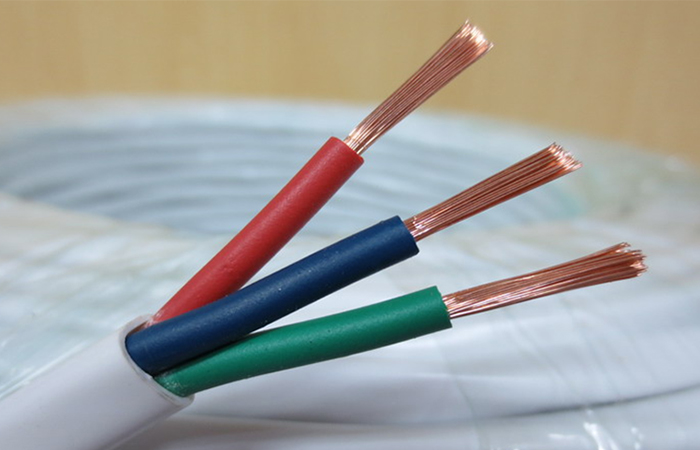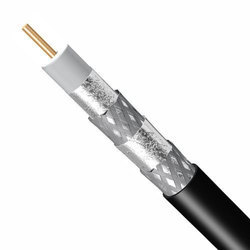There are two types of cables, single core cables and multi-core cables.
Because cabling is the most popular (and in most cases the only) way to power a site.
それで, they are everywhere. You can find them in homes, 工場, public buildings, roads and shopping malls.
A single core underground cable may not be visible because it is buried in a trench, while a multi-core cable application may be visible to all, running on a wall or ceiling.
This raises the question: what is a single core cable or a multi-core cable?
Why do you choose to use multi-core cables instead of single core cables?
次の記事で, we will discuss these questions and provide you with answers.
After reading the information provided, you will be able to communicate with authorities, single core or multi-core cable suppliers when discussing cable procurement for the next cabling project.
What Is A Single Core Cable?
The answer to this question lies in the question itself. The term “single core” is used to describe a cable with a single conductor.
These are different from other types of cables, which are constructed as multi-core cable types.
Conductors in single core cables can be made of copper or aluminum insulating materials.
Contrary to what some may think, a single core cable is not necessarily more flexible or less flexible than a multi-core cable, or thicker or thinner.
These characteristics (thickness, thinness, 柔軟性, or stiffness) usually depend on the size of the single core cable used for a particular application.
The size and thickness depend on the size of the cable. Large diameter cables are less flexible than small diameter cables.

What Is Single Core Cable Used for?
Single core cable is probably one of the most widely used wires in our homes, stores, businesses and commercial facilities.
The most common use of single stranded cables is to transmit power from one location to another.
しかし, depending on the required single core cable size, its application may also be extended to other fields, such as wiring in electrical appliances and equipment.
You may also see single core, non sheathed cables for electrical applications, including power supplies for computers, power control panels, and electronic devices.
For applications where there is a risk of electromagnetic interference (EMI), you can also obtain a single core wire with a specially manufactured shield that is manufactured into the cable.
A similar configuration shield can also be used for flexible multicore cables. This shielded cable is also called braided cable.
Damage to its functions, such as signals from communication equipment or electromagnetic pulses from high-power electrical or electronic equipment.
例えば, if the cable passes near a microwave oven or household cooking appliance, an electrician may use a single core braided cable to protect the cable.
Similarly, if the wiring application passes near the generator, there is always a risk that EMI from the generator may affect the integrity of the cable.
In this case, multi-core or single core braided cables can be used.
Weaving or shielding has another use.
Sometimes, engineers may use braided or shielded single core flexible cables in applications that require slightly stronger cables.
Interwoven metal braids have dual uses.
初め, it helps reduce EMI, which may endanger cabling applications.
しかし, the use of single core braided cables enhances the overall cable strength compared to the unshielded type.
It protects the cable from mechanical stress and extends its service life.
ついに, single core wires with braids are also used in applications where engineers require cables to show additional flexibility.
Because the braid is manufactured as an interlaced lattice tube, single core braided cable or similar multi-core cable, it enhances the insulating conductor below and adds flexibility and versatility to the entire cable.
例えば, this method is used in wiring applications where a single wire cable may encounter tension and distortion during installation.
The same concept applies when flexible multi-core cables are required.

Advantages and Disadvantages of Single Core Cable?
一般的に, the nature and type of application determines the type of routing selection.
例えば, depending on your project objectives, you may decide whether to use 6mm single core cable.
But for another application, this may not be the most appropriate cable.
Each type of cable has its advantages, enabling engineers and electricians to select specific cables for their projects.
If the 0.75mm single core cable is a good choice for indoor applications, it may not be the best choice for outdoor applications.
しかし, using one type of cable over another type of cable has advantages and disadvantages.
Advantages of Single Core Cable:
- Easy to install between stages
- The possibility of short circuit between multiple phases is small
- Convenient for long-distance transportation (例えば, a roll of 10mm single core cable is easier (and takes up less space) than an equivalent multi-core cable type)
- Easy to arrange and install
- Longer cables can be used with the same cross-sectional capacity as multi-core cables
Disadvantages of Single Core Cable:
These cables cannot be armored and are therefore not suitable for applications where there is a risk of mechanical stress.
Since there is no armour, single core cables are more vulnerable to external forces.
Armored cables are preferred for applications requiring installation of cables under severe conditions.
例えば, since 2.5mm single core cables cannot be armored with magnetic steel strip or magnetic strip.
It is more challenging to install multi-core cables of the same size in rugged and stress prone environments.
Single core cables are only protected by a single outer sheath, which makes them more vulnerable to damage.
Slight damage to the housing may cause a short circuit.
In high utilization applications, single core cables are required to be grounded at multiple points, which may lead to the risk of circulation.
Where to Buy Single Core Cables?
結果として, cables are more likely to overheat and eventually burn out, where can I buy high-quality single core cables?
Now that you are familiar with the difference between single core cable and multi-core cable
また, you have already known the advantages and disadvantages of choosing one cable.
You can better make an informed decision on cable procurement.
Learn more about who the manufacturer is.
At ZMS cable, we provide various single core cables for various applications.
We are also a leading manufacturer and multi-core cable supplier.
Our products go through a detailed quality control process and are tested in accordance with the highest international standards.



